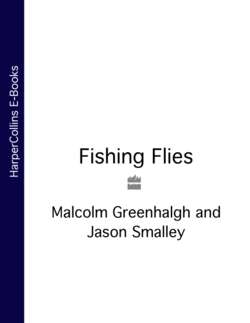Читать книгу Fishing Flies - Smalley - Страница 13
PARTS OF A FLY
ОглавлениеHook: This may be one of several types (e.g. wet fly, dry fly, nymph, streamer, low-water salmon) and sizes. Some flies may also be tied on double and single hooks, tandem mounts, and tubes or Waddington shanks to which a separate hook is fixed. Note that often there may be restrictions as to what hooks may be used on particular stretches of water.
Thread: The ability to use thread well marks the difference between a good tyer and a poor one. The great tyer Terry Ruane used to say that, for the fly-dresser: ‘the hook is the canvas, the thread the brush, and the materials the paint. A good artist is one who can use the brush.’
Tag (sometimes called ‘butt’): Small amount of material (e.g. two or three turns of tinsel or floss silk) wound around the shank before the tail. But note that sometimes ‘tag’ means ‘tail’ (e.g. RED TAG, see here).
Tail: Represents the real tail in some flies based on insects and fish, but added simply to lend movement in, for instance, modern salmon and saltwater flies.
Butt (sometimes called ‘tip’): At the base of the tail and immediately before the body, this is usually added to salmon flies and some loch/lough/sea-trout flies to add a hot spot that might attract the fish’s attention (e.g. a turn of fluorescent floss).
Body: May be separated in insect imitations into abdomen and thorax.
Rib: Suggests segmentation in many imitative flies or, adds extra ‘flash’ (a tinsel rib) in salmon and other flies. Note that, when tying flies that imitate insects, the novice tyer is urged by the expert to rib evenly so that every segment is the same width. Yet in real larvae, pupae and adult insects, the segments will vary in width!
Body hackle: This is a hackle wound spirally around the body. It may be tied in at the end of the body, wound forward and then tied in at the front. Or, it is tied in at the front of the body, wound back around the body, and then fixed in place by bringing the tinsel ribbing forward through it. Note too that in some flies the body hackle is wound in touching turns (e.g. BIVISIBLES, see here), whereas in others it is wound in open turns (e.g. Troth’s ELK HAIR CADDIS, see here).
Wing cases: In nymphs. Usually a slip from a feather, tied in on the dorsal surface between abdomen and thorax, and then brought forward over the back of the thorax after the thorax has been completed and legs tied in.
Shellback: In scud/freshwater shrimps. Usually some synthetic strip tied in at the end of the hook shank and then brought forward over the back of the fly just before completion.
Hackle: Wound at the front of the fly. In a false hackle, hackle fibres are tied in, in front of the body or in front of a fully wound hackle (e.g. GOLDEN-OLIVE BUMBLE, see here). In a parachute hackle, the hackle is tied in and wound around a ‘posted’ wing (e.g. KLINKHAMER SPECIAL, see here).
Legs: In imitative flies. May be a false hackle. Or a feather is tied in by its tip on top of the hook shank, pointing backwards, either before the body (in scuds/freshwater shrimps) or thorax (nymphs) is created. The feather is then brought over the back of the body or thorax and tied in. The fibres sticking out to either side to imitate legs.
Wings: In early flies represented the wings of real insects. Now also means feathers or hairs tied back over or alongside the body in streamers, salmon flies, many saltwater patterns etc. In parachute dry flies and emergers a single wing is tied in first, brought upright and then ‘posted’ with several turns of thread around its base. The parachute hackle is later wound around this posted base.
Topping: Fibres of herl or golden pheasant ‘topping’ feather etc. tied over the top of wings.
Cheeks: Small feathers, e.g. jungle cock eyes, tied in at sides of wings.
Head: Often not mentioned if only of tying thread.
